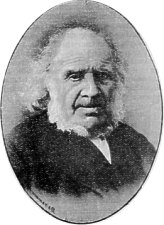
see Methodist Church Record
[taken from Chapter 9 Manx Worthies, A.W.Moore, 1901]
He was a son of John Stevenson Moore and Catherine Clarke, of Peel, and was educated at the Peel Grammar School, under the Rev. Samuel Gelling, being intended for the Manx Church. He afterwards, however, decided to turn his attention to farming instead, and he managed his father's estate of Lhergydhoo, to which he succeeded in 1826. With his secular work he determined to combine that of a Christian evangelist, and so, at the age of 17, he joined the Wesleyans,+ to which body he rendered great services by his preaching and religious fervour. Between 1840 and 1855, his special reform work was the political instruction of those who resorted to the fairs and markets on the north side of the island; it is said that there was no one during this period who possessed greater influence with the Manx country people. He was also a staunch total abstainer and one of the leaders of the movement. Elected a member of the House of Keys for Glenfaba sheading in 1867, he remained a member of that body till 1874. During his membership he distinguished himself by a rare independence of character, one instance of which was his vote against giving £13,000 to complete the Port Erin breakwater, contrary to the wishes of Governor Loch.
+ It must be remembered that at this time there was no distinct line of cleavage between Churchmen and Methodists.
|
|
||
|
Any comments, errors or omissions
gratefully received The
Editor |
||